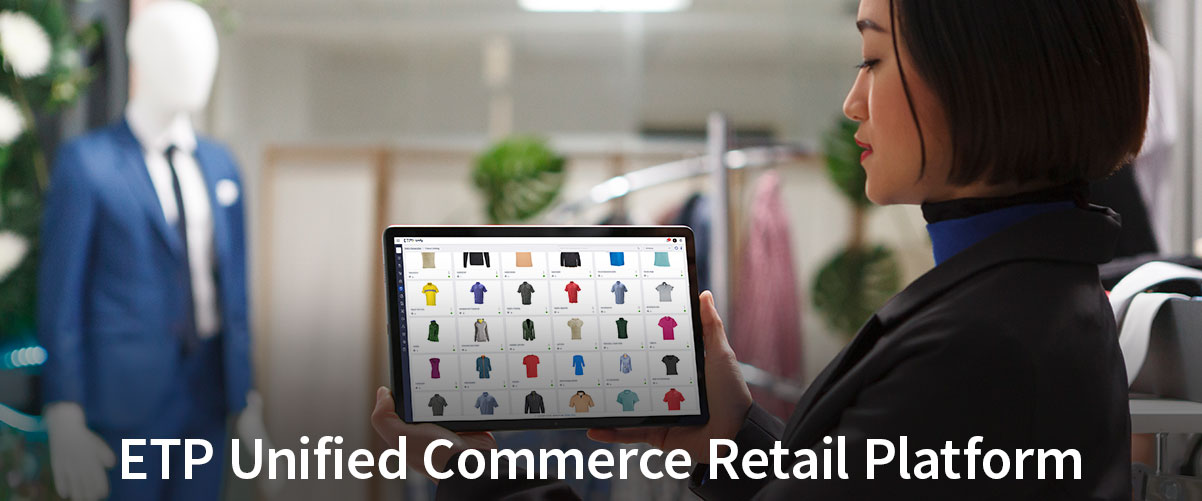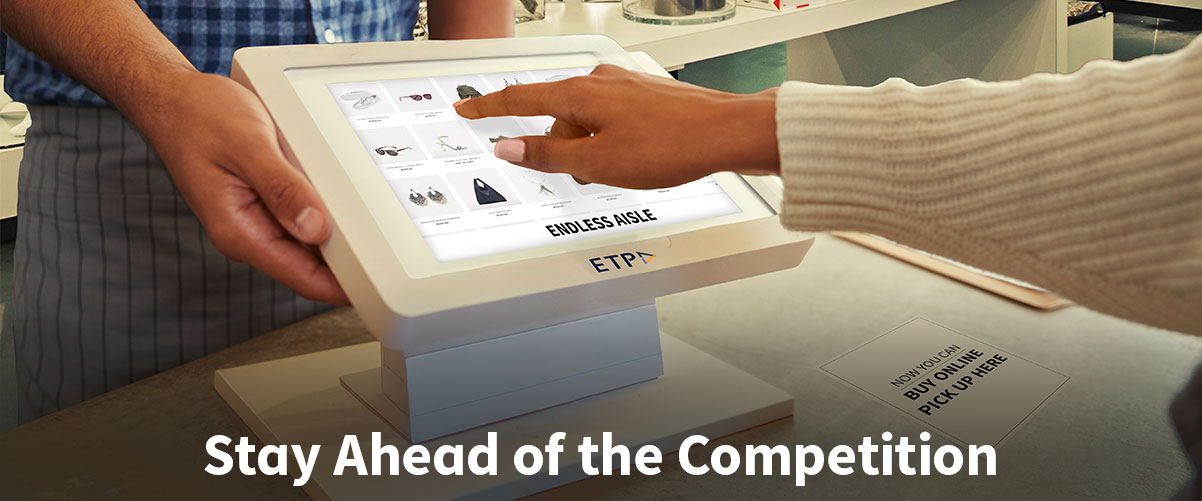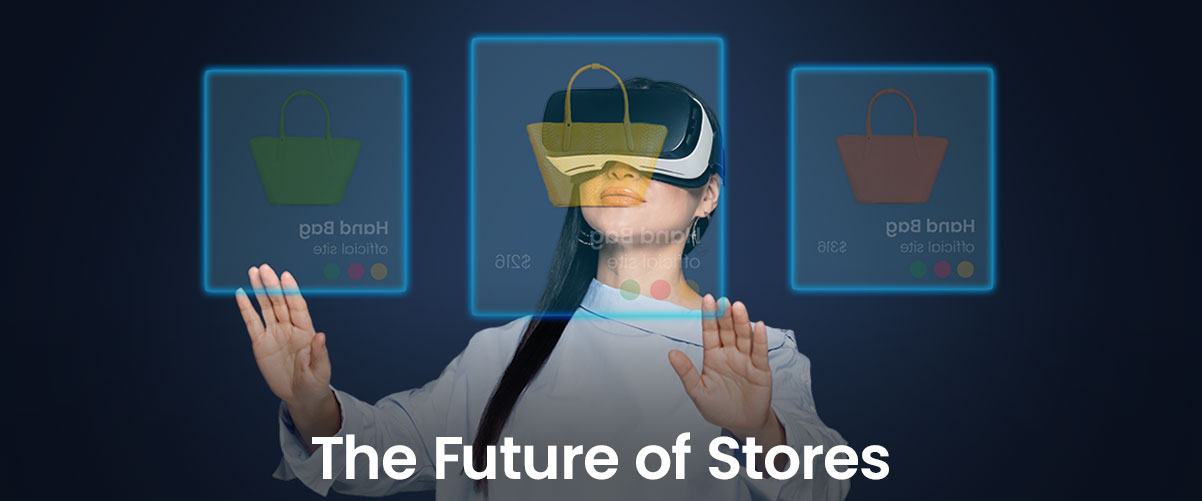
Customers today are everywhere—browsing on their phones, researching online reviews, and visiting your store. The challenge for businesses is to provide a cohesive and positive experience across all these touchpoints. This is where omni-channel retail comes in.
Omni-channel retailing goes beyond just having a website and social media presence. It’s about creating a unified customer journey that empowers customers to interact with you however they choose, fostering brand loyalty, and ultimately driving sales. But here’s the catch: implementing omnichannel effectively isn’t always easy. Many retail businesses struggle to connect the dots, leading to frustrated customers and lost sales.
Let’s explore 4 common omni-channel retail mistakes that could be sabotaging your retail sales, along with solutions and how ETP V5, our powerful omni-channel retail software, can help you fix them fast.
Mistake #1: Siloed Data and Disconnected Experiences
Imagine a customer researching a product on your website, then visiting your store for further assistance, only to discover the salesperson has no access to their online browsing history. This inconsistency creates a frustrating disconnect with the customers.
Why It’s A Problem:
- Missed opportunities: Retailers may miss opportunities to upsell, cross-sell, and provide personalized recommendations.
- Ineffective marketing: Targeted marketing campaigns may not reach the right customers.
- Customer dissatisfaction: Customers may feel that their preferences aren’t being considered.
How ETP V5 Can Help:
ETP V5 offers a centralized data hub that seamlessly integrates with your existing systems, capturing and unifying customer data from every interaction.
The ETP Enterprise Application Server (EAS) acts as a central hub at the head office. It consists of a database that stores consolidated data from retail outlets, including sales, payments, stock, staff, pricing, promotions, and customer details. This enables the sharing of transaction information between different store servers. It also allows for centralized creation and management of key master data.
ETP EAS can operate in a multi-tier setup, promoting scalability. The enterprise application server management features unified reports at head office, centralized control, enhanced security, and maintaining a single source of truth.
This empowers your sales team with real-time customer insights, enabling them to deliver personalized service across channels.
Mistake #2: Inconsistent Promotions Across Channels
Imagine this scenario: A customer finds a product on your website at a discounted price. Excited and wanting to try the product before buying it, he or she heads to your physical store to purchase it, only to find it priced higher. Frustrated, they leave your store empty-handed.
Why it’s a problem:
- Customer confusion: Customers may feel misled or deceived, damaging trust.
- Lost sales: Customers may choose to purchase from competitors offering more consistent pricing.
- Negative brand reputation: Inconsistent pricing can tarnish your brand’s image.
How ETP V5 Can Help:
ETP V5’s centralized pricing and promotion management system ensures that prices and promotions are consistent across all channels. The ETP Omni-channel Retail Promotions Planning solution – ETP Accelerator, is developed to help retailers plan, execute, and monitor retail marketing promotions and deploy them quickly across various channels, online and offline. It is designed with a powerful business rule engine that allows you to visualize a promotion across merchandise, channel, location, time, and customer dimensions. Equipped with an intuitive dashboard, it enables retailers to stay abreast of the customer response to their promotions against various goals and targets set for each promotion.
It then tweaks its retail marketing promotions as well as easily reactivates previously successful promotions. Merchants and stores can view their various marketing promotions across various periods in a daily, weekly, and monthly calendar format using the in-built promotions planning calendar, allowing them to further sync their promotions with the brand’s social media network.
Moreover, the ETP Promotions Planning software also enables you to save promotions and their performance for various seasons or events, review them the next season or event, and redeploy them after tweaking them. ETP Accelerator helps you create a knowledge-based promotion strategy.
Mistake #3: Poor Inventory Management
Imagine this: A customer orders a product online, only to receive an email a few days later saying it’s out of stock. The customer is disappointed and may choose to shop elsewhere.
Why it’s a problem:
- Stockouts: Out-of-stock products can lead to lost sales and customer dissatisfaction.
- Overstock: Excess inventory can tie up capital and increase storage costs.
- Inefficient operations: Poor inventory management can disrupt the supply chain and hinder operations.
How ETP V5 Can Help:
ETP’s Omni-channel Inventory Management module provides a comprehensive solution for managing your inventory across all channels. The Stock Transfer module enables you to seamlessly move inventory between stores, warehouses, and vendors. It also performs local purchases by quickly procuring items from local vendors. Moreover, it conducts accurate and efficient stock counts using handheld devices. Automatically updates inventory by reflecting stock differences in the system.
By leveraging these features, you can optimize your inventory management processes, reduce costs, and improve customer satisfaction.
Mistake #4: Inadequate Returns Management
Imagine this: A customer returns a product online, but the return process is complicated and time-consuming. The customer becomes frustrated and may hesitate to shop online again.
Why it’s a problem:
- Customer dissatisfaction: A difficult return process can damage customer trust and loyalty.
- Increased costs: Managing returns can be costly, especially if the process is inefficient.
- Operational challenges: Inefficient return management can strain resources and disrupt operations.
How ETP V5 Can Help:
ETP’s Omni-channel Store Solution offers a flexible Anywhere Return/Exchange function, allowing customers to return or exchange products across channels. Whether purchased online or in-store, customers can conveniently return or exchange items at their nearest store or have them collected from a desired location. This enhanced service streamlines the return process and improves customer satisfaction.
The solution seamlessly integrates with ETP’s Store Inventory Management function, ensuring accurate inventory updates upon returns. Additionally, it supports buy-back transactions, generating credit notes for customers to use for future purchases. ETP’s Store and ETP Connect Web Services framework enables a seamless and efficient experience for both customers and retailers.
Transform Your Sales with ETP V5 – Omni-Channel Retail Platform
In today’s highly competitive retail landscape, a seamless omni-channel experience is no longer a luxury but a necessity. By avoiding the common pitfalls outlined in this article and leveraging a powerful solution like ETP V5, retailers can create a unified customer journey that drives sales, fosters loyalty, and sets their businesses apart.
ETP V5’s comprehensive suite of tools offers a holistic approach to omni-channel retailing, enabling retailers to optimize inventory management, streamline returns processes, ensure consistent pricing and promotions, and provide personalized customer experiences. By investing in ETP V5, businesses can unlock the full potential of their omni-channel strategies and achieve long-term success.
Ready to take your omnichannel strategy to the next level? Contact us today to see how ETP V5 can help you transform your sales and create a winning customer experience.










